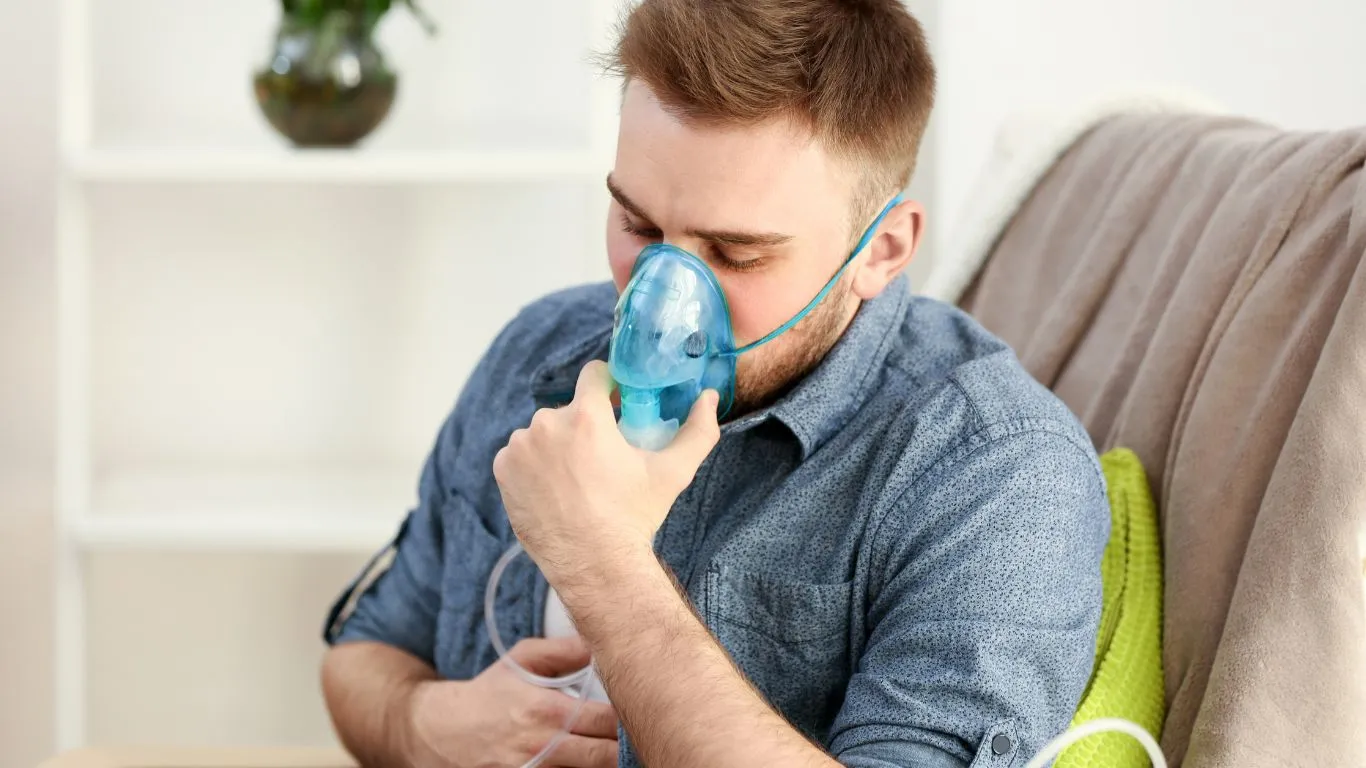Asthma and Respiratory Infections: Protect Yourself with These Tips
As a Pulmonary Nurse with years of hands-on experience, I’ve witnessed the intricate and often alarming relationship between asthma and respiratory infections. Asthma, a chronic condition that causes inflammation and narrowing of the airways, has long been associated with heightened vulnerability to respiratory infections. This connection is particularly concerning because a respiratory infection can exacerbate asthma symptoms, leading to more severe flare-ups, hospital visits, and sometimes even prolonged recovery periods. In my career, I’ve seen countless cases where something as common as the flu can trigger a full-blown asthma attack, leaving patients struggling to breathe and manage their symptoms. Let’s dive deeper into understanding how asthma and respiratory infections are linked and what it means for those living with this condition.
The Complex Connection Between Asthma and Respiratory Infections
For those who suffer from asthma, the prospect of catching a cold, flu, or any other type of respiratory infection is more than just an inconvenience—it’s a serious health risk. Asthma essentially compromises the normal functioning of the lungs, so any infection that targets the respiratory system can quickly make matters worse. This is especially true when the body is already dealing with inflammation in the airways. Respiratory infections—whether viral or bacterial—can trigger severe asthma attacks, increase the frequency of symptoms like wheezing and shortness of breath, and in some cases, lead to hospitalization.
As an experienced Pulmonary Nurse, I’ve observed how asthma patients, particularly those with poorly controlled symptoms, are more susceptible to respiratory infections. These infections not only make their asthma harder to manage, but they also increase the chances of other complications. For instance, an upper respiratory infection (like a cold) can quickly progress into bronchitis or pneumonia in someone with asthma. It’s a delicate balance, and it’s crucial for both patients and healthcare providers to be vigilant in managing both conditions simultaneously.
How Respiratory Infections Affect Asthma: A Deep Dive
When a person with asthma contracts a respiratory infection, the body’s immune response can make asthma symptoms far worse. Here’s a breakdown of what happens:
- Increased inflammation: Respiratory infections lead to an inflammatory response in the body. In those with asthma, this additional inflammation can severely narrow the airways, leading to greater difficulty in breathing.
- Mucus production: A common symptom of many respiratory infections is an increase in mucus production. For someone with asthma, this excess mucus can obstruct the airways even further, leading to coughing, wheezing, and shortness of breath.
- Weakened immune response: Asthma medications, especially corticosteroids, are often used to manage inflammation in the airways. However, these medications can also suppress the immune system, making it harder for the body to fight off infections effectively.
In essence, respiratory infections can create a vicious cycle for asthma patients. The infection triggers inflammation, which worsens asthma symptoms, leading to a weakened respiratory system that is even more vulnerable to further infections. This dynamic is one of the primary reasons why those with asthma need to take extra precautions when flu season hits or when there’s a rise in common respiratory infections.

What Makes Asthma Patients More Vulnerable to Respiratory Infections?
Understanding why individuals with asthma are more susceptible to respiratory infections starts with a look at the underlying mechanisms of asthma itself. Here’s why asthma puts you at greater risk:
- Chronic inflammation: Asthma causes chronic inflammation of the airways, which leads to increased mucus production, airway constriction, and overall difficulty in clearing pathogens. This creates a fertile ground for infections to take hold.
- Weakened airway defenses: The airways of someone with asthma are often already compromised. With asthma, the mucous membranes lining the airways may be damaged or overly sensitive, reducing their ability to trap and clear pathogens like viruses and bacteria.
- Excessive use of inhalers and medications: Asthma patients often rely on inhalers and medications to control symptoms, but these can sometimes affect the body’s natural defense mechanisms. Long-term use of certain asthma medications, like corticosteroids, can suppress the immune system, making it harder for the body to fight off infections.
As you can see, the very factors that make asthma challenging to manage also contribute to a higher risk of respiratory infections. This is why understanding how to manage both asthma and infections simultaneously is so important for anyone living with asthma. I’ve personally worked with many patients who have asthma and frequent respiratory infections, and the key to improving their quality of life is effective disease management, including vaccination and proactive respiratory care.

The Importance of Preventing Respiratory Infections in Asthma Patients
Given the strong link between asthma and respiratory infections, prevention is key. While it’s impossible to eliminate the risk of catching a cold or flu entirely, there are several strategies that asthma patients can adopt to reduce their vulnerability. These strategies include:
- Vaccination: One of the most effective ways to prevent respiratory infections is through vaccination. Flu shots and pneumococcal vaccines can significantly reduce the risk of infections that can exacerbate asthma symptoms. It’s always a good idea to talk to your healthcare provider about getting these vaccines, especially if you’re living with asthma.
- Regular hand hygiene: Frequent handwashing is a simple but effective way to reduce the spread of respiratory infections. As a nurse, I always encourage my asthma patients to wash their hands thoroughly, especially during flu season or when around people who are sick.
- Avoiding triggers: For asthma patients, avoiding respiratory infections is also about avoiding other triggers. Dust, pollen, smoke, and cold air can all act as triggers, making it easier for infections to take hold. By minimizing exposure to these triggers, you can help protect your lungs from further damage.
In the next sections, we will delve deeper into the specific steps you can take to manage asthma during an infection and how lifestyle changes can help prevent flare-ups when you’re sick.

Managing Asthma During Respiratory Infections
When you’re living with asthma, dealing with a respiratory infection can feel like an uphill battle. As we discussed in Part 1, the combination of asthma and a respiratory infection can exacerbate symptoms and make managing your asthma even harder. But don’t worry—there are steps you can take to minimize the impact of infections and manage your asthma effectively. In my experience as a Pulmonary Nurse, I’ve found that early intervention and proactive care are key to preventing severe flare-ups. Here are some practical ways you can manage asthma when you’re dealing with a respiratory infection.
1. Early Detection and Prompt Treatment
When you have asthma, it’s important to be extra vigilant when it comes to recognizing the early signs of a respiratory infection. The sooner you spot the symptoms, the sooner you can take action. Common signs of an impending infection include:
- Increased coughing or wheezing, especially at night.
- Shortness of breath that doesn’t seem to improve with your usual inhaler or medication.
- Chest tightness that’s more pronounced than usual.
- Change in mucus production, such as thicker, discolored mucus.
Once you notice these symptoms, it’s essential to reach out to your healthcare provider right away. They can help determine whether it’s a simple cold or something more serious like bronchitis or pneumonia. In my practice, I’ve often seen patients try to tough it out, but this can lead to complications, especially if your asthma isn’t well controlled. Early intervention, like starting antibiotics for bacterial infections or adjusting asthma medications, can make all the difference.

2. Adjusting Asthma Medications for Infection
During a respiratory infection, your asthma treatment plan might need to be adjusted. This is where close communication with your doctor is vital. Here’s what you might need to consider:
- Increased use of rescue inhalers: If your asthma symptoms become worse during an infection, you might need to use your rescue inhaler more frequently. Keep it with you at all times, and don’t hesitate to use it when needed. But always consult your doctor if you find yourself relying on it more than usual.
- Adjusting preventer medication: In some cases, your doctor may increase the dosage of your preventer medication (like inhaled steroids) to help combat the added inflammation caused by the infection. This can be especially helpful for preventing long-term flare-ups.
- Adding additional treatments: Depending on the severity of your asthma and infection, your doctor may prescribe oral steroids or antibiotics if a bacterial infection is present. These treatments can help reduce inflammation and fight the infection, respectively.
It’s important to follow your healthcare provider’s advice closely during this time. While adjusting medications may seem daunting, it’s all about managing the dual challenges of asthma and infection simultaneously to avoid complications.
3. Staying Hydrated and Rested
It might sound simple, but staying hydrated and getting plenty of rest are some of the most effective ways to help your body fight off a respiratory infection and manage asthma symptoms. When you’re sick, your body uses up more energy to fight the infection, and dehydration can exacerbate asthma symptoms like coughing and wheezing. So, make sure you’re drinking enough water, herbal teas, or other fluids to stay hydrated.
In addition, don’t underestimate the power of rest. It’s tempting to try and power through work or other commitments when you’re not feeling your best, but rest is essential for your body’s recovery. In my experience, many asthma patients push themselves too hard during an illness, which can make symptoms worse and prolong the recovery period. Give yourself the time to rest so that your body can heal and recover more effectively.

Preventing Respiratory Infections in Asthma Patients
While managing asthma during an infection is crucial, it’s equally important to focus on prevention. There are several proactive steps that people with asthma can take to reduce their chances of catching a respiratory infection in the first place. Over the years, I’ve found that the patients who are most successful in managing both asthma and infections are those who take a preventative approach.
1. Getting Vaccinated
Vaccines are one of the most effective tools we have for preventing respiratory infections. The flu vaccine, in particular, is essential for people with asthma because the flu virus can trigger severe asthma attacks. Similarly, the pneumococcal vaccine protects against pneumococcal infections, which can lead to pneumonia. In my career, I’ve seen firsthand how a simple flu shot can prevent a host of problems for asthma patients. I always recommend these vaccines to my patients—especially those who are at higher risk for complications.
It’s important to consult with your healthcare provider about the timing of these vaccines and any other immunizations you may need based on your health condition and age. Vaccines are not just a preventive measure—they’re a safeguard against serious complications.
2. Maintaining Good Hygiene
Another simple but effective way to reduce the risk of respiratory infections is practicing good hygiene. This includes frequent handwashing, especially before meals and after being in public places. It’s also a good idea to avoid close contact with people who are sick, particularly if they’re exhibiting symptoms of a cold, flu, or other respiratory infections. During the colder months, when infections are more prevalent, extra vigilance in these areas can make a significant difference.
Even as an experienced nurse, I find myself reminding my patients to wash their hands regularly and to avoid touching their face, as we often unknowingly introduce viruses into our system through our eyes, nose, and mouth. It’s easy, it’s effective, and it’s one of the simplest ways to prevent respiratory infections.

3. Avoiding Environmental Triggers
Asthma patients are particularly sensitive to environmental triggers like smoke, dust, strong odors, and even temperature changes. These triggers can make your airways more vulnerable to infection. During cold weather or when there’s a lot of airborne allergens, it’s important to limit your exposure as much as possible. This can mean staying indoors during high-pollen seasons or using air purifiers to reduce dust in your living spaces.
I can’t emphasize enough how much of an impact environmental control can have. In my clinical experience, asthma patients who take the time to create a controlled environment—whether it’s through air filtration, humidifiers, or simply avoiding polluted areas—are less likely to develop respiratory infections. It’s an investment in both your asthma management and overall health.
Managing Asthma During Respiratory Infections: Continued Care and Monitoring
As we continue exploring how to manage asthma during respiratory infections, it’s important to focus on how to handle long-term care and monitoring, especially when you’re already feeling under the weather. Managing asthma during infections is not just about acute treatment; it’s about maintaining control over your asthma symptoms in the weeks following an illness. As someone who’s seen firsthand how asthma patients can struggle with post-infection flare-ups, I can tell you that consistent care and monitoring are essential for maintaining your health.
1. Post-Infection Recovery: Giving Your Body the Time it Needs
After an infection, it can take a while for your body to fully recover, and this is especially true for those with asthma. I’ve seen many patients rush their recovery, thinking they’re back to normal once they’ve finished their round of antibiotics or antiviral medications. However, asthma can linger even after the infection has cleared up, leaving you vulnerable to further complications. I’ve worked with countless patients who experienced ongoing wheezing, chest tightness, and shortness of breath for weeks after a respiratory infection. That’s why it’s crucial to give your body the time it needs to heal fully.
During recovery, it’s important to continue monitoring your asthma symptoms closely. If you notice that your symptoms aren’t improving as expected, or if they’re getting worse, it’s important to reach out to your healthcare provider. They may need to adjust your asthma management plan or run further tests to rule out lingering complications, such as post-infection bronchitis.

2. Maintaining an Asthma Action Plan During Illness
As we’ve discussed, being proactive with your asthma during an infection is key. One of the most effective ways to stay on top of your condition is by sticking to your asthma action plan. If you don’t already have one, I highly recommend talking to your healthcare provider about creating one. An asthma action plan is a written plan that outlines how to manage your asthma based on the severity of your symptoms. It should include:
- Your daily medication regimen: This should be clear and easy to follow, with specific instructions on how to use your rescue inhaler, daily medications, and other treatments.
- When to seek medical help: This includes knowing when your symptoms are worsening, such as experiencing more frequent wheezing, tightness in your chest, or a drop in peak flow readings.
- Instructions for managing asthma during an infection: Your plan should address what to do if you get sick. This may involve increasing your medication dosage, using a nebulizer, or other adjustments.
Having an asthma action plan helps ensure that you’re taking the right steps at the right time. It can prevent asthma from spiraling out of control when you’re sick and give you the confidence to manage your health during an infection. In my practice, I’ve found that patients with a well-detailed asthma action plan are better equipped to handle respiratory infections and manage their asthma symptoms efficiently.
3. The Role of Regular Follow-ups and Monitoring
Once your infection has cleared, regular follow-ups with your healthcare provider are essential. These appointments allow your doctor to assess how well your asthma is being controlled and if any changes are needed to your medication regimen. They can also check for any lingering issues like reduced lung function or inflammation that could make you more susceptible to future infections.
Additionally, I always recommend that patients with asthma track their symptoms at home. This can include keeping a record of their peak flow readings, daily medication use, and any flare-ups they experience. Keeping a log not only helps you notice patterns but also provides valuable information to your healthcare provider during follow-up visits. This ongoing monitoring can help catch any potential issues early and allow for prompt intervention before things get worse.

References for Further Reading
For more information on asthma and respiratory infections, and to help guide you on your journey to better asthma management, here are some reliable sources to check out:
- Health.com – Asthma Management Articles
- National Institutes of Health – Asthma Resources
- Centers for Disease Control and Prevention – Asthma and Respiratory Infection Guidelines
These websites offer up-to-date, evidence-based information that can help you stay informed about asthma, infections, and overall lung health.
Disclaimer
While the information provided in this article is based on my personal experience as a Pulmonary Nurse and current medical understanding, it is important to consult with your healthcare provider for individualized advice and treatment. This article is not intended as a substitute for professional medical advice, diagnosis, or treatment. Always seek the advice of your physician or another qualified healthcare provider with any questions you may have regarding a medical condition. If you are experiencing a medical emergency, please call your doctor or emergency services immediately.

Bianca Nala is a compassionate Nurse Practitioner with a strong background in primary and respiratory care. As a health writer for Healthusias.com, she combines her clinical expertise with a talent for clear, relatable storytelling to help readers better understand their health. Bianca focuses on topics like asthma, COPD, chronic cough, and overall lung health, aiming to simplify complex medical topics without losing accuracy. Whether she’s treating patients or writing articles, Bianca is driven by a single goal: making quality healthcare knowledge accessible to everyone.






